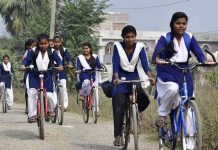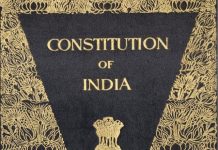This article is written by Himanshi Chandani, Harsh Shrivastav, students of Lloyd Law College, Gr. Noida, UP.
Table of Contents
Introduction
In a recent Supreme Court judgment, the five-judge bench (consisting of Justices Ashok Bhushan, L. Nageswara Rao, S. Abdul Nazeer, Hemant Gupta and S. Ravindra Bhat) struck down Maharashtra’s law which provides reservation benefits to Maratha community. It was held that the Maratha community is not socially and educationally backward to be brought under the umbrella of reservation. This Supreme Court decision is excruciating for the ruling party of Maharashtra but the Supreme Court found no merit in the Maratha claim of backwardness. In 2018 Maharashtra Assembly passed a bill proposing 16% reservation for Maratha Community.
In 2019, the Bombay High Court while upholding the reservation pointed out that instead of 16% it should be reduced to 12% in education and 13% in jobs. The court has now repudiated the High Court decision and its reasoning that the denial of status of backward class, has pushed them deeper into a social and educational backwardness and made them eligible to ask for reservation. A five-judge constitution bench unanimously concluded that this reservation is unconstitutional on many grounds including breaching of the 50% quota rule fixed by the Supreme Court earlier in Indira Sawhney v. Union of India case.
Also the Supreme Court noticed that “States have no ability to add any standing to the socially financially in reverse position list because of the change made by parliament. “Only the President can add the position to the SEBC list guided by the National Backward Classes Commission.”
Framework behind the Maratha quota
Before coming to the background of Maratha quota, it becomes very evident to know who are Marathas? And why are they demanding reservation? The Maratha people are a politically dominant community in Maharashtra. They are mainly peasants and landowners and form nearly one-third of the population of the state. If we dig deep into the historical aspect of Marathas then they have been known as a ‘warrior’ caste with large land holdings. Notwithstanding the political dominance over the years, due to rising agrarian crisis and land division there was a decline of financial stability among the middle class and lower middle class of the Maratha community. This financial instability led to the demand for reservation in jobs and education.
The Bill giving 16% reservation to the Maratha community in jobs and education came after the community organised a stupendous tranquil strike throughout the year 2017 and 2018. Although the demand was not new, it had been pending since the 1980s. Several protests had been held by the community in those years but those protests were not united as the ones we saw in the year of 2017 and 2018. And therefore these strong and united protests forced the political parties to make an affirm step pertaining to the Maratha reservation.
The NCP (National Congress Party) promised to the people of the Maratha community in the 2009 assembly election that they will give reservation to Marathas.in 2014 the then congress-NCP government fulfilled their promise by awarding 16% reservation to the Maratha community. However, in 2014, Congress- NCP government was defeated and a new government was formed by BJP and Devendra Fandavis was elected as a chief minister of Maharashtra. This new BJP led government enacted a law regarding the Maratha reservation which was struck down by the Bombay High Court. After that clamouring for the new law was increased.
But in November 2017, a nine-member Maharashtra State Backward class Commission headed by Justice (retired) M.G. Gaikwad, made a report considering many specifications and submitted it to the Government. The then Chief Minister, Mr. Fadnavis had submitted the Action Taken Report (ATR) in the Assembly for approval.
What were the specifications mentioned in a report?
In 2017, a nine-member committee headed by MG Gaikwad submitted that there are many variables available to make the Maratha Community eligible for reservation. They claimed that this report is based on many public interaction and grassroot meetings conducted by pundits and institutions including gram panchayat public representatives and organisations.
It tracked down that 76.86 % of Maratha families were occupied with horticulture and ranch work, around half lived in mud houses, just 35.39% had individual faucet water associations, 13.42% of Marathas were not proficient with just 35.31% having essential schooling, 43.79 % having cleared Higher Secondary Certificate and Secondary School Certificate.
The report mentioned that Marathas were a ‘warrior’ caste and the men were many a time far away for campaigns. So women had to be in the “purdah system” in order to protect themselves from rival rulers. Gradually, this system became the custom for the women and due to this women were not allowed to go outside for even education. And here the reason for educational backwardness started according to the report. The report mentioned another reason for educational backwardness that children, especially “girls” did not get a chance to pursue basic education and that is why they were not able to participate in government competitive exams. Due to this, there was a lower representation in government jobs.
The report concluded that the Maratha community had lost its self-esteem which could be remedied by providing them a reservation.
Complexities involved in Maratha Quota Case: In 2017, when Maharashtra Assembly passed the socially and educationally backward classes act which normally provided 16% reservation to the Maratha Community, it increased the existing total percentage from 57% to 68% which breached the 50% limit. This law was straight away questioned in the Bombay High Court. The High Court sustained the law but reduced the 16% Maratha reservation to 12% in employment and 13% in education.
The High Court concluded that quotas satisfied the criteria of “extraordinary circumstances” the Supreme Court sculptured out in its judgement of Indra Sawhney v. Union of India in 1992.
In Indra Sawhney v. Union of India in 1992, a nine-judge bench of the Supreme Court came to a landmark decision that ordinary quotas should ordinarily be restricted to 50%, but there would be an exception to this 50% only if some extraordinary circumstances are established. But in 2019, several medical students of Mbbs challenged the constitutional validity of an amendment to SEBC Act, 2018. But this petition was dismissed by Bombay High Court. Recently the Supreme Court refused to grant an interim stay on plea by medical student, seeking a direction that 12% quota not be made applicable for admission in postgraduate mental and dental courses for the academic year 2020-2021.
Last year, the Bombay High Court judgement was questioned in the Supreme Court. A three judge bench of the Supreme Court set down that evidently it did not agree with the High Court reasoning and placed the matter before the Hon’ble Chief Justice. This resulted in the formation of a 5-judge Constitutional bench.
Turning point of the case
The five-judge bench had mounted six questions of law on the issue. The Bench agreed one and all on three issues but the verdict spitted in the ratio of 3:2 on the other three issues. The constitution bench informed that it would hear detailed arguments on six questions. The first three were related to the power of state when it comes to providing reservation not just above 50% but also within this limit.
Issue 1- On readdressing the Indra Sawhney case ruling one of the main problems before the Constitutional Bench was to scrutinize whether the 1992 landmark case Indra Sawhney v. Union of India had to be revisited or not?
This is the case in which the Mandal Commission report was upheld and it consigned two prime paradigms. First the criteria for a group to qualify reservation is social and educational backwardness. Second, it recapitulated the 50% limit to vertical quotas reasoning that it was impertinent to ensure ‘efficiency’ in administration. But a count ensured an exception to this limit in ‘extraordinary circumstances’. The court unanimously decided that there is no limit to readdress the case. The 50% limit albeit an arbitrary determination by court but it is now constitutionally accepted.
Issue 2 and 3- Whether the Maratha reservation falls under extraordinary circumstances?
Now, it was decided that there is no need to readdress the Indra Sawhney Case the court looked at whether the Maratha Reservation falls under extraordinary circumstances. The court also addressed the Gaikwad commission report. The Maharashtra government argued that the population of Maratha Community is 85% and the reservation limit is only 50% , so an increase in reservation would be justified in extraordinary circumstances.
The Constitutional Bench differed from the reasoning of state government. The court said that the Maratha Community is the dominant and mainstream community. The bench also observed that the MG Gaikwad Commission report too did not focus only on “extraordinary circumstances”.
Issue 4, 5 and 6- Whether the state has power to identify by SEBCs and 102nd Amendment?
The 102nd Amendment Act, 2018 gives constitutional status to National Backward Commision. And this Act provides power to the President to identify Backward classes. Many states raised their voice against this amendment to curtail their power.
The Constitution unanimously upheld the Constitutional validity of the 102nd Amendment but took a different view on whether it curtailed the power of states to identify the Backward class.
Nevertheless, the Supreme Court observed that the final say in regard to inclusion or exclusion (or modification of lists) of SEBCs is firstly with the President, and thereafter, in case of modification or exclusion from the lists initially published, with the Parliament”.
“In the task of identification of SEBCs, the President shall be guided by the Commission set up under Article 338B; its advice shall also be sought by the state in regard to policies that might be framed by it. If the commission prepares a report concerning matters of identification, such a report has to be shared with the state government, which is bound to deal with it, in accordance with provisions of Article 338B. However, the final determination culminates in the exercise undertaken by the President,” Justice Bhat held.
Conclusion
This Constitutional Bench judgment additionally brings a snapshot of retribution for different networks, for example, the Patidars in Gujarat, who, in the wake of a developing trouble because of underlying changes in the economy, have been preparing for amounts. The Constitution has imagined reservation as an instrument to address authentic treachery and segregation. Ways should be found to address different sorts of disappointment and impediment too.
Eventually, a goal to the developing fuss to be proclaimed in reverse may just lie in the public authority tending to supply side issues in schooling and work. Until further notice, a tricky piece of the SC decision should be evaluated — three of the five appointed authorities were of the view that solitary the President will have the ability to distinguish the regressive classes in a state or UT. The inquiry, who is in reverse, and who gets what amount, is a significant one. The appropriate response must be found with the cooperation of states.
References
- https://indianexpress.com/article/explained/maharashtra -Maratha-quota-supreme-court-verdict-7303546/
- https://www.thehindu.com/news/cities/mumbai/explaine d-why-do-Marathas-need-reservation/article34488110.ec e
LawSikho has created a telegram group for exchanging legal knowledge, referrals, and various opportunities. You can click on this link and join:












